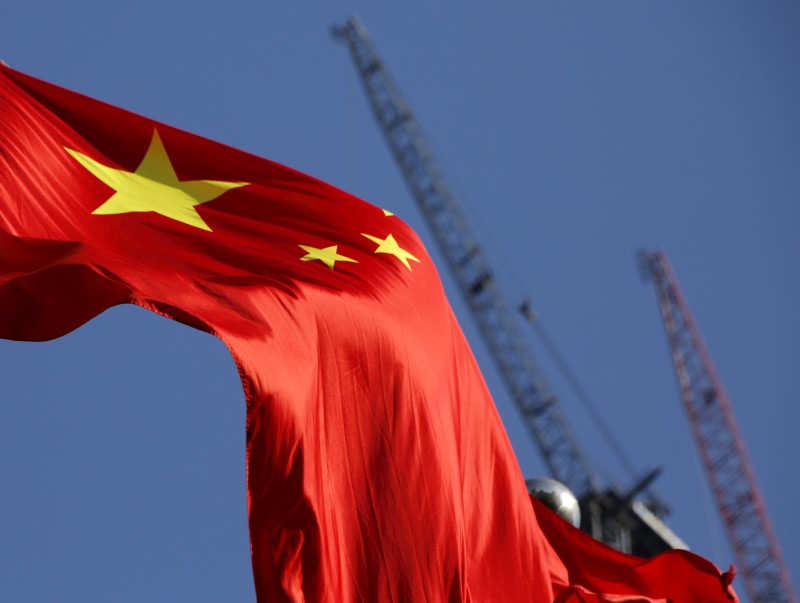Intel stock spikes after report of possible US government stake
(Bloomberg) -- The rebound in China’s world-leading markets for industrial commodities will enter a decisive phase this week, as investors brace for a government response to the coronavirus that could determine the course of prices for the rest of this year and beyond.
The policy-setting National People’s Congress beginning in Beijing on Friday is arguably the pivotal stage of a recovery that has seen China’s raw materials output and energy consumption rebound from a virus-induced crash to pre-pandemic levels. Next up could be the kind of fiscal jolt that can sustain demand and reignite an economy that contracted by an unprecedented 6.8% in the first quarter.
The last time China’s ruling Communist Party was staring down an economic disaster approaching this magnitude was during the 2008 financial crisis. Its response then was a boon for commodities, as 4 trillion yuan ($560 billion) was poured into road and rail construction and property development, driving up demand for everything from iron ore to copper to diesel.
It’s unlikely the same blanket stimulus will be deployed this time around. The government may instead take a more surgical view of the areas that can drive the economy, having identified seven sectors in technology, mass transport and power infrastructure it plans to support. Combined spending on these could be about $205 billion this year, according to BloombergNEF.
“The focus seems to be on new infrastructure such as 5G and artificial intelligence, all of which are less commodity-intensive than the previous stimulus programs we’ve seen that have encouraged construction activities,” said Michal Meidan, director of China research at the Oxford Institute for Energy Studies. “The commodity rebound from February’s depressed levels is likely to continue as the economy recovers, but I doubt we will see a 2008-2009 style bounce.”
Steel
Steel markets in particular will be looking to the gathering in Beijing for signs on how far the government will go in using traditional cement-led stimulus to prop up the economy. Infrastructure spending is often the means by which the Communist Party delivers on its growth promises, and the absence of a GDP target this time around would be negative for steel, which gets well over half its demand from construction.
At stake is a modest recovery in steel markets since the shock of China’s pandemic controls. Rebar prices have rebounded from multi-year lows, even as production hit a record high in the first four months of the year, and major steelmakers are turning a profit.
Threats still abound, with manufacturing demand fragile and export markets ravaged by the global pandemic. China Baowu Steel Group, the world’s biggest steelmaker, warned earlier this month of the risk of oversupply as demand slows. And few steel-watchers expect Beijing to deliver the same kind of decisive demand boost seen in the aftermath of 2008-2009 crisis, or even the slump of 2015-2016.
“Even if the government increases infrastructure spending materially, that can’t really increase overall steel demand,” said Kai Hu, senior vice president at Moody’s Investors Service. “It will not fully compensate for demand from real estate, or machinery and manufacturing.”
Copper
Copper, zinc and aluminum inventories in China, the top user and producer of the metals, have all fallen by more than half from mid-March highs as manufacturing resumed following the extended disruption from the pandemic.
With overseas demand still muted in the face of continued lockdowns, the NPC gathering will be key to continuing the market’s positive momentum, said Fan Bingting, an analyst with China Industrial Futures Co.
Recent Politburo meetings have set the tone for stimulus, which will include stronger fiscal policy that involves more government debt issuance, and expanded monetary policy including cuts to interest rates and requirements around banks’ reserves, Fan said. Investors are now watching for the details, including the possibility that policy makers may over-deliver on expectations.
Coal
China is burning more of the fuel as electricity demand returns to normal. Power generation even managed a small year-on-year rise in April for the first time in 2020, while a key indicator tracking coal use at select power plants on the east coast was up 30% on 2019’s levels at one point last week.
Demand is expected to improve in the second half in tandem with government measures to boost industrial production, according to the China National Coal Association. The inclusion of long-distance power lines in the central government’s infrastructure plan could benefit new coal power plants in remote provinces near mines, according to Alex Whitworth, the Beijing-based head of Asia-Pacific power and renewables research for consultant Wood Mackenzie Ltd.
Oil
Chinese oil demand is virtually back to pre-virus levels, as industrial activity picks up and commuters choose the relative safety of cars over crowded trains and buses.
State refining giant Sinopec (NYSE:SHI) said in late April that its plants were operating at normal levels, while independent refineries in the Shandong region are producing fuel at a record clip, according to consultancy SCI99. The higher processing rates have allowed China to reduce oil stockpiles in April, even as the rest of the world fretted over exceeding its capacity.
A surge in industrial activity following stimulus spending could add to already-strong diesel demand as more trucks are deployed to transport the increased amount of goods produced.
Renewable Energy
The beginning of 2020 was disastrous for renewable energy, as lockdowns slowed the installation of new plants in the world’s largest market. Solar installations fell by 24% in the first quarter, while new wind capacity slumped by more than half.
It leaves developers racing to erect panels and turbines over the remainder of the year before subsidy programs expire. The industry has been pushing for extensions due to the pandemic, and anything from the NPC allowing that or otherwise boosting profitability for developers would be welcomed.
©2020 Bloomberg L.P.
